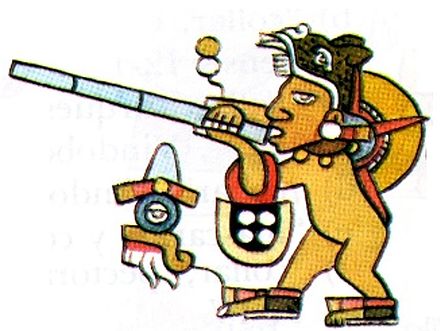-
Posts
25.684 -
Joined
-
Days Won
300
Everything posted by Lion.Kanzen
-
.thumb.png.ce58cea22940c255f5b0a735d5abee36.png)
Civ: Germans (Cimbri, Suebians, Goths)
Lion.Kanzen replied to wowgetoffyourcellphone's topic in Delenda Est
Curious like everyone, you must learn to model in blender. -
.thumb.png.ce58cea22940c255f5b0a735d5abee36.png)
Civ: Germans (Cimbri, Suebians, Goths)
Lion.Kanzen replied to wowgetoffyourcellphone's topic in Delenda Est
The market is the one that has to change the style of the siege arsenal structure, it must be that of a garage or a hangar (sometimes open). The market is that of small shelves around a central structure. -
To calculate the lag it is important to know the map, the number of players, the number of units, maximum population capacity per player, map size.
-
what game specs? Map, players...
-
You have the wrong idea, and not everyone is trained in the same areas. Most of us have things to do, the other part is not active for years, especially since 2021 we lost almost all the art team, especially the 3D. The 2D is me who is a volunteer and Wow....
-
No. For that there is a bug forum and an art forum.
-
I don't know if we should remember this here, this is a project that we are doing in our spare time and we are not in any hurry to finish it by any specific date. So we have about a thousand more important things to do both in art and programming than to pay attention to a detail that no one has ever noticed except zooming in on it. There are only two people who can solve this for you, although I can also more or less give you a solution but not a complete one. The best thing to do is to open a ticket and hope that sometime in the next 10 years someone will solve it. The best thing to do is to open a ticket and hope that sometime in the next 10 years someone will solve it. Because that's how things work here, you have to bring it to the attention of the right person to fix it, I'm not going to fix it, Stan is not going to fix it because it's not our job. The only person I can think of who can fix it is Wowgetoffyoucellphone.
-
this takes time. @wowgetoffyourcellphone You were designing terrains.
-
Interesting. I like that the tower has a target. It would be interesting to experiment.
-
.thumb.png.ce58cea22940c255f5b0a735d5abee36.png)
Proposal, Mayan City States [preclassic and classic]
Lion.Kanzen replied to Lion.Kanzen's topic in Rise of the East
Blowgun reference. Mixtec blowgun Many cultures have used such a weapon, but various indigenous peoples of East Asia, Southeast Asia, Western Europe, North America, Central America (the Huehuetenango region of Guatemala), and South America (the Amazon Basin and the Guianas) are best known for its historical usage. Projectiles include seeds, clay pellets, and darts. Some cultures dip the tip of the darts in curare or other arrow poisons in order to paralyze the target. Blowguns were very rarely used by these tribes as anti-personnel weapons, but primarily to hunt small animals such as monkeys and birds. The North American Cherokee were known for making blowguns from river cane to supplement their diet with rabbits and other small creatures. Blowguns are depicted in paintings on pre-Columbian pottery and are mentioned in many Mesoamerican myths. Back then and today, the Maya use a blowgun to hunt birds and small animals with spherical dry seeds and clay pellets. The clay ammunition is made slightly larger than needed (to allow for shrinkage and refinement) and stored in a shoulderbag. The outside of the dry clay pellet is shaved off and burnished right before use.[1] Shorter blowguns and smaller bore darts were used for varmint hunting by pre-adolescent boys in traditional Cherokee villages.[2] They used the blowguns to reduce the population of small rodents such as rats, mice, chipmunks and other mammals that cut or gnaw into food caches, seed and vegetable stores, or that are attracted to the planted vegetables. While this custom gave the boys something to do around the village and kept them out of mischief,[3] it also worked as an early form of pest control.[4] Some food was also obtained by the boys, who hunted squirrels with blowguns well into the 20th century -
Tell him he's enlisting to defend Ukraine if he's so Nazi.
-
different approach.I honestly don't see the problem. Red alert is based in ancient world?
-
5 is nothing. Why are you going to make such a rare unit, so weak?
-
@fabio Sorry for bother you, you in Italy or in Italian language use the word "cojone"? Or is it from some region of Italy?
-
https://football-italia.net/giaccherini-italy-have-cojones/ https://wikidonca.it/index.php?title=Cojone&mobileaction=toggle_view_desktop here it says Perugino dialect. https://es.bab.la/diccionario/espanol-italiano/cojones Seems to be related to "coglioni" https://es.bab.la/diccionario/italiano-espanol/coglioni They sound almost identical in the root of the word. https://it.m.wikipedia.org/wiki/Coglione
-
apparently it is inappropriate.refers to the genitals. Cazzo is penis and cojone is testicles. Basically insults(And vulgarities of a sexual nature) that I can't repeat
-
usually this doesn't go here.(in this topic). This one goes in the suggestions or suggestions for biome-maps.
-
I don't see any problem. Its resistance is supposed to be due to many abstractions.. The same can be said for elite soldiers.






